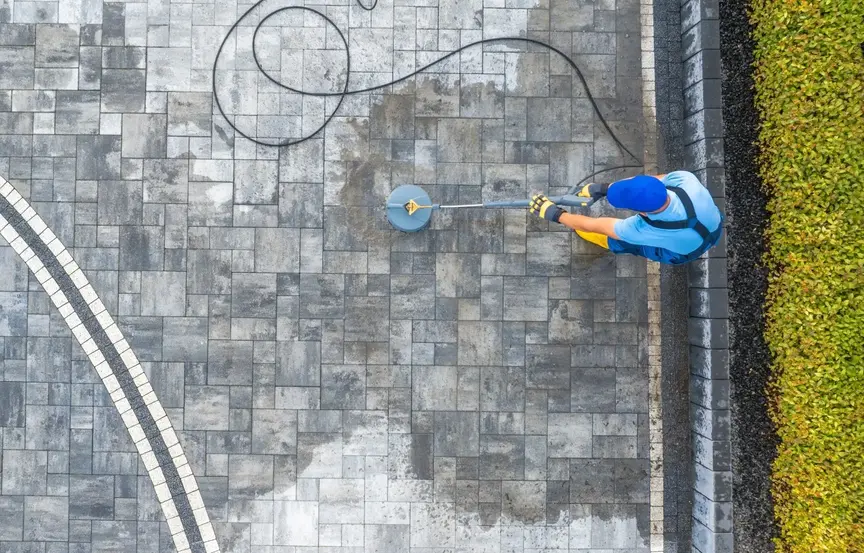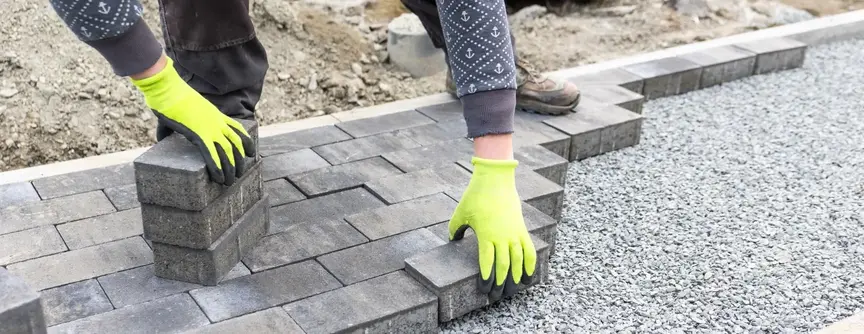A well-maintained paver patio enhances the beauty and durability of your outdoor space. Whether you have concrete, brick, or natural stone pavers, sealing them is essential for protection against stains, weed growth, and weather damage.
Proper sealing not only preserves the natural appearance of your pavers but also enhances their color, giving them a beautiful semi-gloss, matte, or wet-look finish.
Keep reading this blog to learn more about sealing your patio pavers and how to make them last longer.
1. Choosing the Right Paver Sealer
Paver sealing specialists advise selecting the correct type of concealer to ensure it works effectively. Water-based sealers are a popular choice because they provide a breathable acrylic barrier that allows moisture to escape, reducing the risk of cloudy or dark spots. These sealers are ideal for moisture-sensitive areas and offer easier cleanup.
On the other hand, solvent-based sealers deliver a more substantial moisture barrier and a high-gloss shine, but they require proper ventilation during application.
Acrylic sealers are often recommended for brick and concrete paver patios because they enhance the natural color while providing advanced water repellency. If you prefer a more subtle look, a matte or low-gloss finish will maintain the pavers’ original appearance while still offering protection.
2. Preparing the Surface for Sealing
You need to properly prepare your surface before applying any sealer. Start by removing debris, dirt, and stains using a garden sprayer or pressure washer. Inspect the surface for crooked or uneven pavers and reposition them if necessary.
Next, refill the joints with fresh jointing sand or polymeric sand to stabilize the pavers and prevent shifting. An excellent choice for paver joints, polymeric sand forms a solid bond when activated by water, creating a durable barrier that discourages weeds and prevents washout.
Once the surface is clean and the joints are filled, allow the patio to dry completely—ideally in dry weather—before moving on to the sealing process.
3. Applying the Sealer for Best Results
For an even and professional-looking finish, use a high-quality applicator such as a nap roller, foam roller, or sponge-type roller. Apply the sealer in thin, even coats to avoid puddling, working in small sections to ensure complete coverage. If you prefer a flood coat application, a commercial-grade sprayer will provide better control than cheap plastic sprayers.
Pay special attention to the edges and joints, as these areas are prone to wear and weed growth. A single coat is often sufficient, but for added durability—especially in high-traffic areas—a second coat may be recommended. Always follow the manufacturer’s instructions for drying times before allowing foot traffic.
4. Maintaining Your Sealed Pavers
Proper maintenance keeps your sealed pavers looking pristine and extends their lifespan. Follow these simple tips:
- Prevent stains from setting in by cleaning spills immediately.
- Remove dirt and debris using a broom to prevent wearing down the sealer.
- Avoid harsh chemicals—use mild soap and water for routine cleaning.
- Reapply sealer every two to three years for continuous protection against weather and wear.
- Inspect joints periodically and replenish polymeric sand if needed to prevent weed growth.
With consistent care, your sealed pavers will stay beautiful and durable for years.
5. How Weather Affects Paver Sealer Longevity
Extreme weather conditions significantly impact the longevity of paver sealers. Intense UV exposure can break down sealers over time, causing fading and reduced water resistance, while frequent freeze-thaw cycles in colder climates may lead to cracking or peeling. For optimal durability, apply sealer in mild, dry weather to ensure proper curing and adhesion.
Humidity and rainfall also play a key role—sealing during high humidity can trap moisture, resulting in hazy or uneven finishes. Coastal areas with salt air may require more frequent reapplication due to accelerated wear. Choosing a sealer formulated for your local climate, such as UV-resistant acrylics for sunny regions or flexible sealers for freeze-prone zones, will maximize protection.
6. Exceptional Cases: Sealing Historic or Antique Brick Pavers
Sealing antique or historic brick pavers requires extra care to preserve their character while protecting them from damage. Avoid high-gloss sealers that create an artificial look, and opt for breathable, matte-finish formulas that allow moisture vapor transmission. Test any sealer on a small, inconspicuous area first to ensure it doesn’t darken or alter the brick’s natural patina.
Gentle cleaning methods, like low-pressure washing and pH-neutral cleaners, should always precede sealing to avoid eroding aged surfaces. Lime-based or clay brick pavers may need specialized sealers to prevent salt efflorescence or spalling. Consulting a preservation expert ensures the right balance between protection and maintaining the pavers’ historic integrity.
7. When to Hire a Professional
While DIY sealing is possible, larger or more complex projects may benefit from professional expertise. A landscape contractor or brick paver restoration contractor can assess your patio’s condition, recommend the best sealer, and ensure an even, long-lasting application. They can also help with repairs, such as resetting loose pavers or replacing damaged ones before sealing.
Conclusion
Sealing your patio pavers is one of the best ways to protect your investment and enhance your outdoor living space. Whether you choose a water-based or solvent-based sealer, proper preparation and application will ensure excellent protection and lasting beauty. By following these steps—or consulting a professional when needed—you can enjoy a stunning, durable paver patio for years to come.

